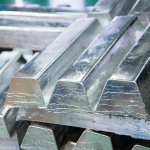Lead For Radiation Protection
Lead Wire, Rods, Bars, Ingots
Summary
- TLM lead sheet is manufactured under the highest standards in quality assurance procedures at all stages of production.
- Large quantities are used in industry for lining pipes, tanks, and X-ray apparatus
- Due to its high density and nuclear properties, lead is used extensively as protective shielding for radioactive material.
- Lead sheet is the preferred material for medical radiation shielding projects, and acoustic insulation as a sound barrier material.
Introduction:
Lead wire and rods find applications across various industries due to lead's unique properties such as high density, malleability, and resistance to corrosion. Here's a detailed write-up on the usage of lead wire and rods:
Properties of Lead Wire and Rods:
- High Density: Lead possesses a high atomic number (82) and density (11.34 g/cm³), making lead wire and rods effective for applications requiring mass or weight. This high density allows them to be used in balancing mechanisms, counterweights, and vibration dampening applications.
- Malleability: Lead is highly malleable and ductile, allowing it to be easily formed into wires and rods of various shapes and sizes. This malleability makes lead wire and rods suitable for applications requiring custom shapes or configurations, such as sealing, gasketing, and electrical connections.
- Corrosion Resistance: Lead exhibits excellent resistance to corrosion, particularly in environments with low acidity or alkalinity. This corrosion resistance makes lead wire and rods suitable for outdoor and marine applications where exposure to moisture and atmospheric conditions is common.
- Low Melting Point: Lead has a relatively low melting point (327.5°C or 621.5°F), which allows for easy casting, soldering, and joining of lead wire and rods. This property is advantageous in manufacturing processes requiring thermal processing or assembly at low temperatures.
- Electrical Conductivity: While not as conductive as copper or aluminum, lead still possesses reasonable electrical conductivity, making lead wire and rods suitable for low-voltage electrical applications such as grounding, shielding, and soldering connections.
Applications of Lead Wire and Rods:
- Sealing and Gasketing: Lead wire is commonly used in sealing applications, such as sealing joints in plumbing, roofing, and construction. Lead rods are also utilized for fabricating gaskets and seals in engines, machinery, and industrial equipment due to their malleability and resistance to compression.
- Ballasts and Counterweights: Lead wire and rods are used as ballasts and counterweights in various applications, including marine vessels, aerospace systems, and industrial machinery. Their high density allows for efficient weight distribution and balance, contributing to stability and performance.
- Radiation Shielding: Lead wire and rods are employed in radiation shielding applications, such as in the construction of lead-lined rooms, enclosures, and containers for storing radioactive materials. Their high density and attenuation properties make them effective barriers against ionizing radiation.
- Fishing and Diving Equipment: Lead wire is commonly used in fishing tackle, such as fishing weights and sinkers, to provide the necessary weight for casting and sinking fishing lines. Lead rods may also be used in diving equipment, such as diving belts and weight systems, to achieve neutral buoyancy underwater.
- Crafts and Hobbies: Lead wire and rods are used in various crafts and hobbies, such as stained glass art, jewelry making, and model building. They can be easily shaped, bent, and soldered to create custom designs and structures.
- Soundproofing and Vibration Dampening: Lead wire and rods are utilized in soundproofing and vibration dampening applications to reduce noise and vibration transmission in buildings, machinery, and automotive systems. Their high density and flexibility help absorb and dissipate sound and vibrations effectively.
Safety Considerations:
While lead wire and rods offer valuable properties and versatility, it is essential to handle them with care due to the potential health hazards associated with lead exposure. Proper ventilation, personal protective equipment, and safe handling practices should be employed when working with lead materials to minimize the risk of lead poisoning and contamination.
Conclusion:
Lead wire and rods are versatile materials with a wide range of applications across industries. Their unique properties, including high density, malleability, and corrosion resistance, make them indispensable for sealing, ballasting, radiation shielding, and various other applications. However, it is crucial to use lead materials responsibly and adhere to safety protocols to ensure the health and safety of workers and the environment.
Share







